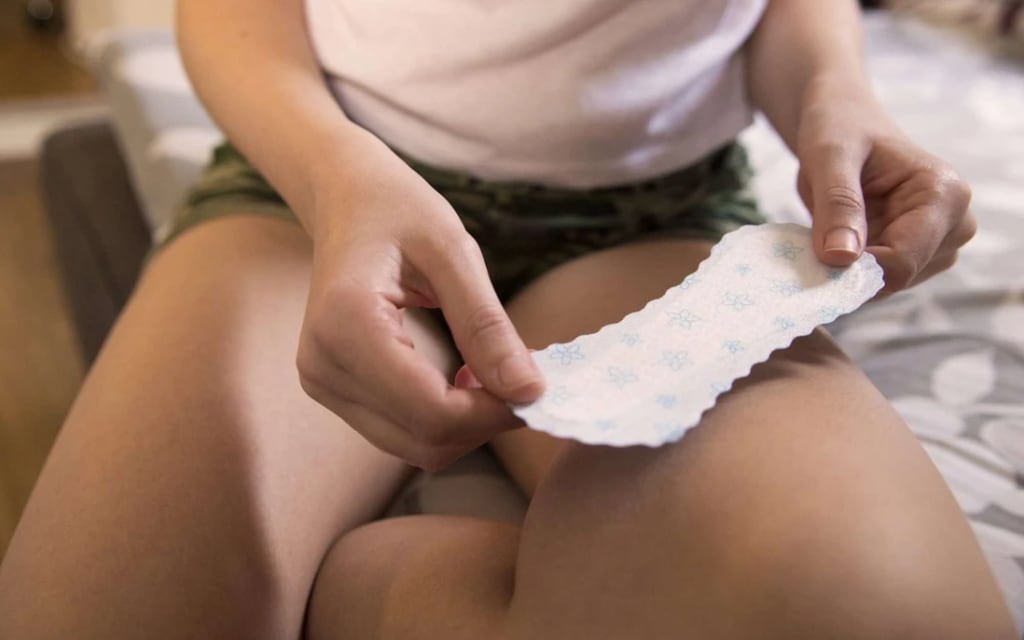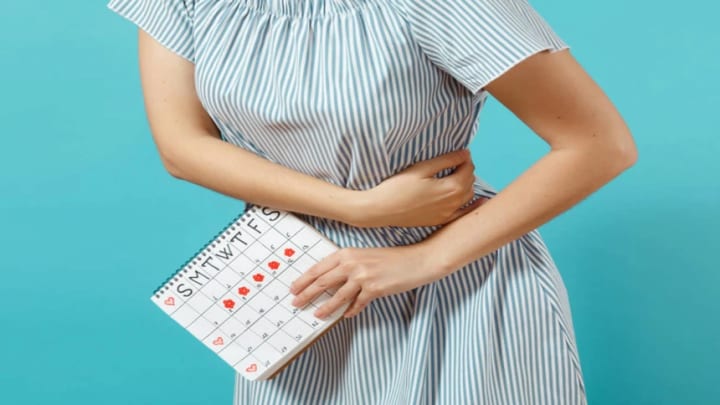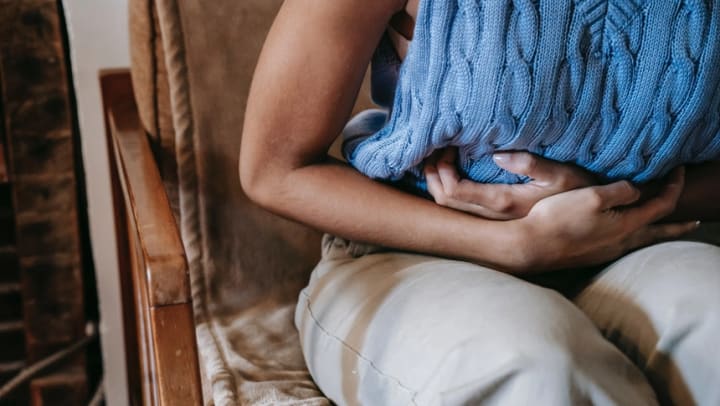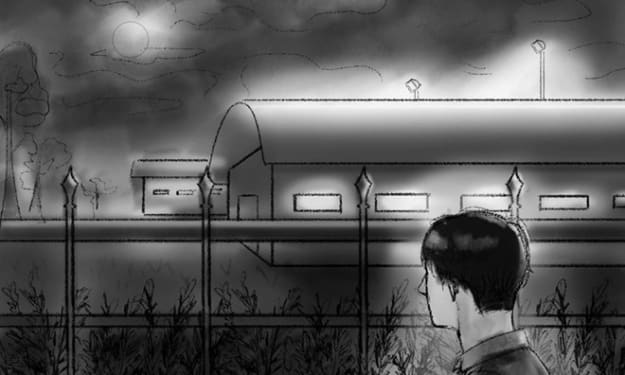What causes the feeling of menstrual cramps but no period?
Feeling menstrual cramps but not having a period can be caused by stress, infection, or urinary or intestinal problems.

Here are 14 common causes of abdominal pain but no period:
1. Ovulation
Ovulation can cause abdominal pain and discomfort, and sometimes bleeding. This is known in the medical community as mittelschmerz, which is “mid-cycle pain” and refers to the pain and discomfort that comes with ovulation.
During ovulation, you will usually feel pain on one side of your lower abdomen. It can feel dull or sharp and can last from a few minutes to 2 days. The severity of the pain depends on when your ovary releases an egg, so you may feel cramps on different sides each month or in the same place each time.
Other signs that may indicate you're ovulating include:
- Vaginal discharge is jelly-like, clear and slippery (like egg whites)
- Soft breasts
- Bloating
- Light bleeding or spotting
- Change in position and stiffness of the cervix
- Increased sexual desire
- Increased sense of smell, taste or vision
- Mood swings
- Change the taste

Abdominal pain that feels like menstruation but no period may be due to premenstrual syndrome. More than 90% of women experience some premenstrual symptoms - cramps being one of them.
In addition to abdominal pain, other physical symptoms of PMS may include:
- Breast swelling or pain
- Constipation or diarrhea
- Bloating
- Headache or backache
- Lower tolerance to noise or light
Emotional or mental symptoms of PMS may include:
- Uncomfortable
- Feeling tired
- Sleep problems (sleeping too much or too little)
- Change in taste or appetite
- Concentration or memory decline
- Stress or anxiety
- Depression, feeling sad or tearful
- Mood swings
- Less interested in sex
3. Constipation
Constipation is another culprit for pelvic pain. If you feel a sharp pain in your lower abdomen, it may be due to gas or stagnant stool. Other signs of constipation include:
- Feeling bloated
- Feeling full
- Abdomen is visibly distended.
You may be constipated if you have fewer than three bowel movements a week and your stools are hard and difficult to pass.
To prevent constipation, you should eat lots of fiber-rich foods, drink lots of water and exercise regularly.
4. New to hormonal contraception
For many people, hormonal birth control can help control menstrual cramps. That's because the medication reduces the body's release of prostaglandins (i.e., chemicals that make your uterine muscles contract). Fewer contractions mean less stomach pain.
But when you first start using certain forms of birth control, they can sometimes cause a little pelvic pain as your body adjusts.
Some hormonal contraceptives include birth control pills, IUDs, patches, injections, or implants.

Endometriosis is a potential cause of non-menstrual cramps. Endometriosis is a condition in which uterine tissue grows outside (rather than inside) the uterus, causing significant cramping.
Endometriosis often causes severe menstrual cramps that can start before your period and last for several days. Because this tissue is sensitive to hormonal fluctuations, it can become inflamed at different times during your menstrual cycle and cause pain.
6. Enteritis
Chronic bowel problems can also cause pelvic pain. For example, people with inflammatory bowel diseases (IBD) such as ulcerative colitis or Crohn’s disease have ongoing inflammation in their bowels. Abdominal pain is just one of the symptoms they may experience on a daily basis or during flare-ups.
Other signs of Crohn's disease and ulcerative colitis include:
- Diarrhea
- Tired
- Blood in stool
- Reduce appetite
- Unintentional weight loss
Although Crohn's disease and ulcerative colitis cannot be cured, they can be controlled with things like anti-inflammatory medications, immunosuppressants, or biologics (drugs that help reduce inflammation).

7. Infection
Abdominal pain but no period can also be a sign of infection. Some common infections that can cause pelvic pain include:
- Pelvic inflammatory disease (PID)
+ Pain in the lower abdomen
+ Abnormal vaginal discharge, usually yellow or green, with an unusual odor
+ Chills or fever
+ Nausea and vomiting
+ Pain during sex
+ Irregular periods or bleeding or abdominal pain throughout the month
If left untreated, PID can lead to more serious health problems, such as ectopic pregnancy or infertility.
- Urinary tract infection (UTI)
+ Pain or burning when urinating
+ Frequent urination
+ Feeling the urge to urinate but the bladder is empty (i.e. no urine or very little)
+ Blood in urine
8. Fibroids or polyps
Fibroids and polyps in the uterus can also cause pelvic cramps and feel like menstrual cramps.
When fibroids are small, they are usually not a cause for concern. But when they grow larger, they can cause problems such as pain during sex or lower back pain.
Pelvic pain is not a telltale sign of uterine polyps, but if they are large enough, they can cause a dull ache in the abdomen or lower back similar to menstrual cramps.
9. Ovarian cysts
Ovarian cysts are fluid-filled sacs that develop on or inside the ovaries. This condition is extremely common, is usually harmless, and usually goes away on its own.
Ovarian cysts may not cause any symptoms, but when the cyst is large enough, there may be pelvic pain or a dull ache in the back. Depending on the person, this pelvic pain can be sharp or dull and come and go for no reason.
Other symptoms of ovarian cysts:
- Feeling of fullness (bloating) in the lower abdomen
- Pain during sex
While most ovarian cysts will rupture or shrink on their own, some may need to be surgically removed. Your doctor can determine this by performing an ultrasound of your ovaries.
10. Have polycystic ovary syndrome PCOS
Polycystic ovary syndrome (PCOS) occurs when your ovaries produce too much hormones called androgens, creating a hormonal imbalance. People with PCOS often have multiple cysts on their ovaries and pelvic pain.
Other signs of polycystic ovary syndrome PCOS:
- Irregular menstruation
- Dry
- Excessive hair growth on the face, chest, abdomen or thighs
- Weight gain
- Acne or oily skin
- Thickened skin patches
Although PCOS cannot be cured, you can make lifestyle changes to control the condition, including eating a balanced diet, exercising, reducing stress and taking certain vitamins, supplements or medicine prescribed by a doctor.
11. Interstitial cystitis
Interstitial cystitis (IC), also known as painful bladder syndrome, is a chronic condition that occurs when the wall of your bladder becomes inflamed or irritated.
Other possible IC symptoms are:
- Frequent urination
- Urgent urination
- Pain during sex
These symptoms may get worse during your period or when you feel extremely stressed. Even certain foods (like spicy or acidic foods) can trigger an interstitial cystitis flare-up.
12. Early signs of pregnancy
In addition to mild abdominal pain, some other symptoms of early pregnancy include nausea, headaches, fatigue, breast tenderness and dizziness.
13. Ectopic pregnancy
Ectopic pregnancy means the embryo does not attach and develop in the uterus but instead implants in another location. An ectopic pregnancy can also cause painful menstrual cramps.
14. Premenopause
Perimenopause — the transition time leading up to menopause or the end of menstruation — can cause some cramps whether you have your period or not.
Because your hormones are constantly changing during perimenopause, your ovulation may also be irregular. During a typical menstrual cycle, estrogen levels drop after you ovulate. But during perimenopause, your estrogen levels may rise after ovulation. When this happens, your body releases substances called prostaglandins, which cause the uterus to contract. These contractions can cause abdominal pain, sometimes without bleeding.
Other symptoms of perimenopause may include hot flashes (sudden and intense body heat) and mood changes.
About the Creator
Ken aquariums
Telling stories my heart needs to tell <3 life is a journey, not a competition
If you like what you read, feel free to leave a tip,I would love some feedback
https://sites.google.com/view/hk-decor/trang-ch%E1%BB%A7
Enjoyed the story? Support the Creator.
Subscribe for free to receive all their stories in your feed. You could also pledge your support or give them a one-off tip, letting them know you appreciate their work.






Comments (1)
Excellent words